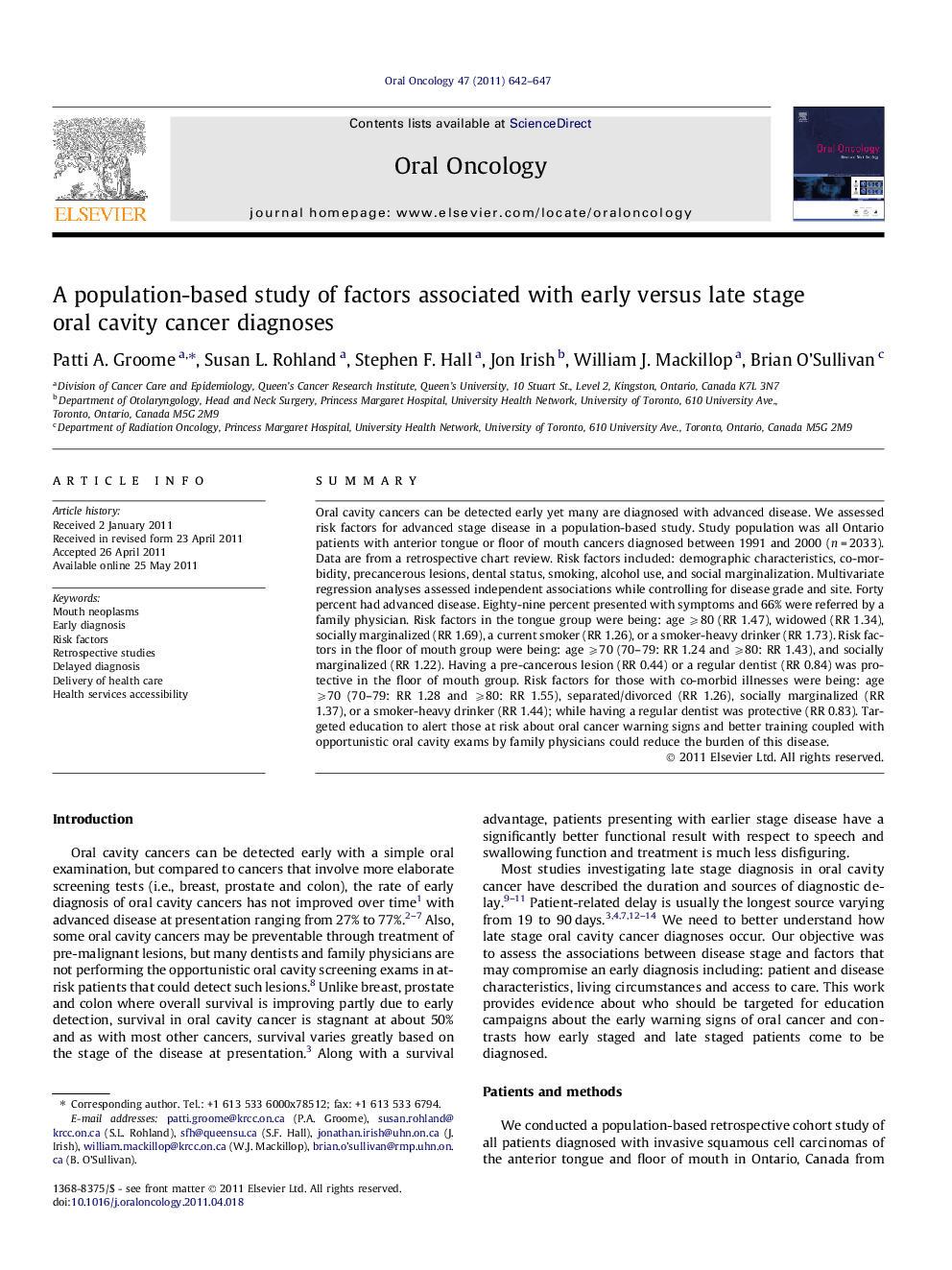| Article ID | Journal | Published Year | Pages | File Type |
|---|---|---|---|---|
| 3164678 | Oral Oncology | 2011 | 6 Pages |
SummaryOral cavity cancers can be detected early yet many are diagnosed with advanced disease. We assessed risk factors for advanced stage disease in a population-based study. Study population was all Ontario patients with anterior tongue or floor of mouth cancers diagnosed between 1991 and 2000 (n = 2033). Data are from a retrospective chart review. Risk factors included: demographic characteristics, co-morbidity, precancerous lesions, dental status, smoking, alcohol use, and social marginalization. Multivariate regression analyses assessed independent associations while controlling for disease grade and site. Forty percent had advanced disease. Eighty-nine percent presented with symptoms and 66% were referred by a family physician. Risk factors in the tongue group were being: age ⩾80 (RR 1.47), widowed (RR 1.34), social marginalized (RR 1.69), a current smoker (RR 1.26), or a smoker-heavy drinker (RR 1.73). Risk factors in the floor of mouth group were being: age ⩾70 (70–79: RR 1.24 and ⩾80: RR 1.43), and socially marginalized (RR 1.22). Having a pre-cancerous lesion (RR 0.44) or a regular dentist (RR 0.84) was protective in the floor of mouth group. Risk factors for those with co-morbid illnesses were being: age ⩾70 (70–79: RR 1.28 and ⩾80: RR 1.55), separated/divorced (RR 1.26), socially marginalized (RR 1.37), or a smoker-heavy drinker (RR 1.44); while having a regular dentist was protective (RR 0.83). Targeted education to alert those at risk about oral cancer warning signs and better training coupled with opportunistic oral cavity exams by family physicians could reduce the burden of this disease.
